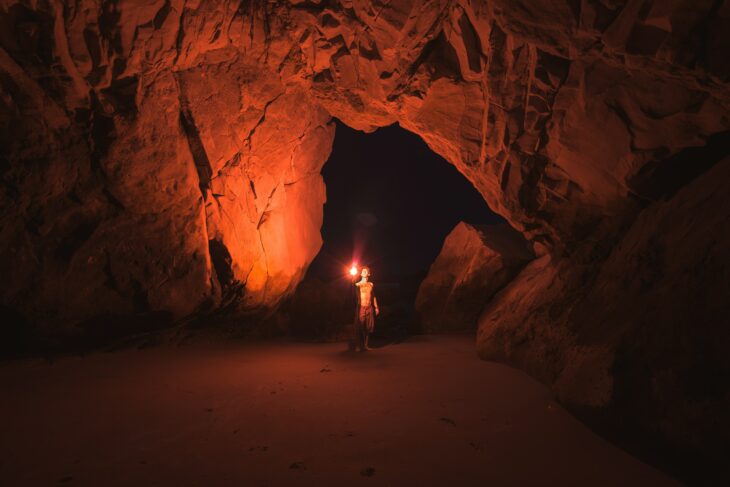The Earth is covered with tiny microscopic life, called microorganisms. Bacteria, fungi, and other types of microorganisms are abundant in soils, rivers, lakes, and the ocean. But did you know that caves are also filled with diverse microorganisms?
All microorganisms, including the underground ones, matter for Earth’s climate. They can produce or consume greenhouse gases, which affects how carbon moves around and through the Earth. Methane and carbon dioxide are two important greenhouse gases that are cycled in caves, but scientists want to know how much of these gases subterranean microbes store versus how much they produce.
A group of researchers led by Tamara Martin-Pozas set out to investigate these questions in the Pindal Cave ecosystem in Asturias, Spain. The scientists first wanted to determine what types of microorganism live in the cave sediments and how they affect elements important to life, like carbon and nitrogen. Next, they wanted to determine which microorganisms can consume or produce greenhouse gases like carbon dioxide and methane. Finally, they wanted to measure how much gas is moving between the cave soil and the cave air under different climate conditions.
The scientists focused on a specific type of cave formation known as moonmilk. Moonmilk is a white pasty substance sometimes found on the ceilings and walls of caves. Moonmilk has a variety of textures that resemble a marshmallow being roasted over a campfire. Just like how marshmallows start out gooey and soft but become crispy and crunchy as you roast them, moonmilk can range from soft and fluffy to hard and crusty.
The team focused on moonmilk because it is thought to capture carbon dioxide when it forms. They sampled cave walls with a lot, a little, and no moonmilk present. They collected samples from the surface of the moonmilk, from deeper within the moonmilk, and from the sediments underneath the moon milk.
The researchers placed a closed chamber on top of the samples to measure how much methane and carbon dioxide was going into or coming out of them. They found moonmilk emitted carbon dioxide during some times of the year, and took up carbon dioxide during others. They also found that moonmilk consumed methane year round.
They also extracted a specific gene to identify what type of bacteria were present in the moonmilk, a process called 16S rRNA gene sequencing. Once the researchers knew what type of microorganisms were living there, they could better understand how diverse they are, how many of them are living there, and what roles or functions they might play in cycling greenhouse gases in the cave.
The scientists found the most common group of bacteria in the moonmilk and cave sediments were a group called Actinobacteria. These bacteria are a very diverse group of microorganisms found in soils and many other places at the Earth’s surface. They contribute to the global carbon cycle in the surface realm by breaking down and decomposing plant material.
The team found two groups of microorganisms were especially abundant in the samples taking up the most carbon dioxide and methane. One of these groups was a member of the Actinobacteria, in the genus Crossiella. The other was a mysterious group of bacteria known only as “wb1-P19”. The wb1-P19 group does not have a proper name because they have never been grown in a lab. These and other researchers have predicted both groups of bacteria have genes for taking up carbon dioxide, which led the authors to hypothesize they could be working together to capture carbon dioxide in the caves.
The authors concluded that moonmilk, and the microbes found in it, play an important role in cave environments by capturing and storing carbon dioxide from the atmosphere. The moonmilk microbes also consume methane, similarly reducing the amount of that greenhouse gas in the atmosphere. The team suggested even underground microbes hidden beneath our feet can affect Earth’s climate.


